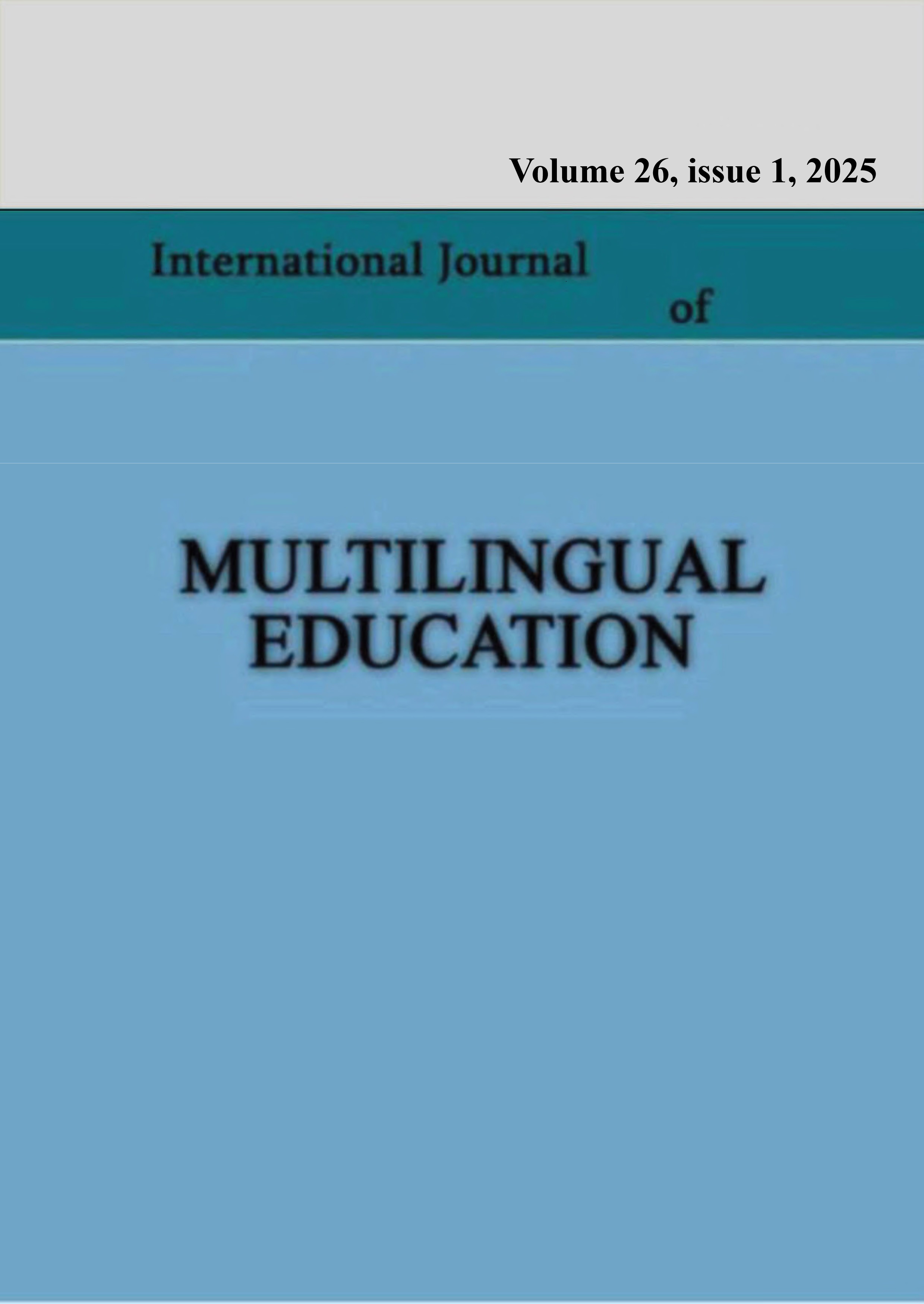Multilingual Practices in the Linguistic Landscape: Insights into Linguistic Repertoires and Language Policy
DOI:
https://doi.org/10.22333/ijme.2025.9075Keywords:
Language contact, Language planning, Shop signs, Public signage, MultilingualismAbstract
Globalization has expanded cross linguistic communication, influencing Algeria’s linguistic landscape, especially its public signage. The linguistic landscape (LL) -introduced by Robert B. Landry and Richard Y. Bourhis, )1997(- encompasses the languages found in public signage, outdoor advertisements, street nameplates, storefront signage, and official signage, collectively shaping the linguistic environment of a specific area. This study investigates how Tiaret’s linguistic landscape reflects its multilingual character and language practices. The objective is to demonstrate how LL can offer valuable insights into the linguistic repertoire of Tiaret, including patterns of language use, official language policies, prevailing language attitudes, and the long-term impact of multilingual encounters. This research adopts a qualitative approach to analyze the representation of languages in public signage. Data were collected through an interview and an observation of street signs, advertisements, building names, warnings, billboards, store signs, and official signs. The findings revealed a complex relationship between the official language policies, societal attitudes, and multilingual representation in public signage. Future research is required to investigate the impact of foreign language mastery on public signs in the country.
References
Backhaus, P. (2006). Signs of multilingualism in Tokyo: A linguistic landscape approach. Clevedon: Multilingual Matters.
Backhaus, P. (2007). Linguistic landscapes: A comparative study of urban multilingualism in Tokyo. Clevedon: Multilingual Matters.
Basimolodi, O. M. (2000). A review of Botswana’s language policy in education and its effect on minority languages and national development. In R. Trewby & S. Fitchart (Eds.), Language and development in Southern Africa: Making the right choices (pp. 143–158). Namibia: Gamsberg Macmillan Publishers.
Ben-Rafael, E. (2009). A sociological approach to the study of linguistic landscape. In E. Shohamy & D. Gorter (Eds.), Linguistic landscape: Expanding the scenery (pp. 40–54). New York: Routledge.
Bunyi, G. W. (2005). Language classroom practice in Kenya. In A. M. Y. Lin & P. W. Martin (Eds.), Decolonisation, globalisation, language-in-education policy and practice (pp. 131–152). Clevedon: Multilingual Matters.
Cenoz, J., & Gorter, D. (2006). Linguistic landscape and minority languages. International Journal of Multilingualism, 3(1), 67–80. https://multilingualeducation.openjournals.ge/
Claus, R. J. (2002). The value of signs for your business. Signline, 38, 1–8.
Gorter, D. (Ed.). (2006). Linguistic landscape: A new approach to multilingualism. Clevedon: Multilingual Matters.
Huebner, T. (2006). Bangkok’s linguistic landscapes: Environmental print, code-mixing, and language change. International Journal of Multilingualism, 3(1), 30–57. https://doi.org/10.1080/14790710608668384
Hult, F. M. (2009). Language ecology and linguistic landscape analysis. In E. Shohamy & D. Gorter (Eds.), Linguistic landscape: Expanding the scenery (pp. 88–104). New York: Routledge.
Jaworski, A., & Thurlow, C. (Eds.). (2010). Semiotic landscapes: Language, image, space. London: Continuum.
Kachru, B. B. (1990). The alchemy of English: The spread, functions, and models of non-native Englishes (Illini Books ed.). Urbana: University of Illinois Press. (Original work published 1986)
Kress, G., & van Leeuwen, T. (1996). Reading images: The grammar of visual design. London: Routledge.
Landry, R., & Bourhis, R. Y. (1997). Linguistic landscape and ethnolinguistic vitality: An empirical study. Journal of Language and Social Psychology, 16(1), 23–49. https://multilingualeducation.openjournals.ge/
Mac Giolla Chríost, D. (2007). Language and the city. London: Palgrave Macmillan.
Malinowski, D. (2009). Authorship in the linguistic landscape: A multimodal performative view. In E. Shohamy & D. Gorter (Eds.), Linguistic landscape: Expanding the scenery (pp. 107–125). New York: Routledge.
McCormick, K., & Agnihotri, R. K. (2009). Forms and functions of English in multilingual signage. English Today, 25(3), 11–17.
Pennycook, A. (1994). The cultural politics of English as an international language. London: Longman.
Phillipson, R. (2003). English-only Europe? Challenging language policy. London: Routledge.
Preisler, B. (1999). Functions and forms of English in a European EFL country. In T. Bex & R. Watts (Eds.), Standard English: The widening debate (pp. 239–268). London: Routledge.
Rey, M. (2004). Multilingual writing: A reader-oriented typology with examples from Lira Municipality (Uganda). International Journal of the Sociology of Language, 40, 126–140.
Scollon, R., & Scollon, S. W. (2003). Discourses in place: Language in the material world. London: Routledge.
Schlick, M. (2003). The English of shop signs in Europe. English Today, 19(1), 3–17. https://multilingualeducation.openjournals.ge/
Shohamy, E., & Gorter, D. (Eds.). (2009). Linguistic landscape: Expanding the scenery. New York: Routledge.
Shohamy, E., Ben-Rafael, E., & Barni, M. (Eds.). (2010). Linguistic landscape in the city. Bristol: Multilingual Matters.
Downloads
Published
How to Cite
Issue
Section
License
Copyright (c) 2025 Khaled Belarbi, Louiza Belaid

This work is licensed under a Creative Commons Attribution-NonCommercial 4.0 International License.
Copyright (c) - Authors who publish with this journal agree to the following terms: Authors retain copyright and grant the journal the right of first publication with the work simultaneously licensed under a Creative Commons Attribution-Noncommercial 4.0 International License, which allows others to share the work with an acknowledgement of the work's authorship and initial publication in this journal. Authors are permitted and encouraged to post their work online (e.g., in institutional repositories or on their personal website) prior to and during the submission process, as it can lead to productive exchanges, as well as earlier and greater citation of published work (see The Effect of Open Access). Authors may enter into separate, additional contractual arrangements for the non-exclusive distribution of the journal's published version of the work (e.g., post it to a repository or publish it in a book), with an acknowledgement of its initial publication in this journal.

